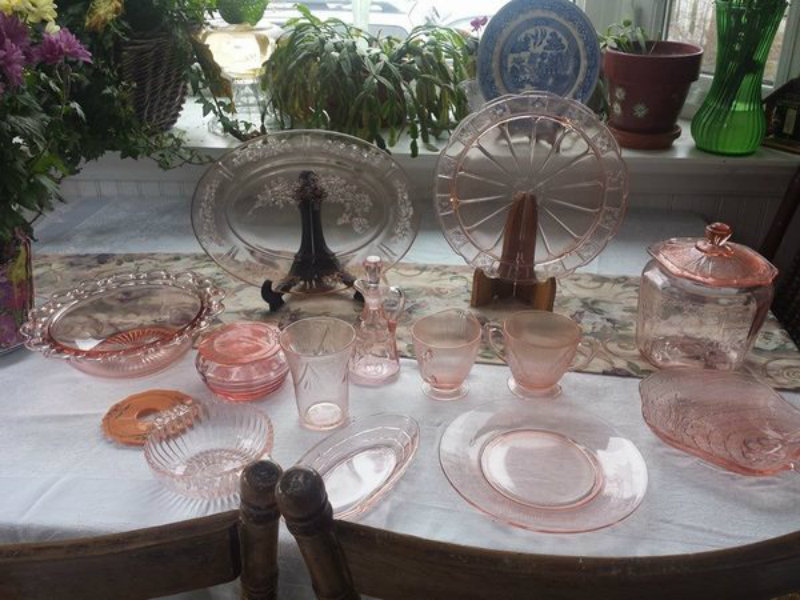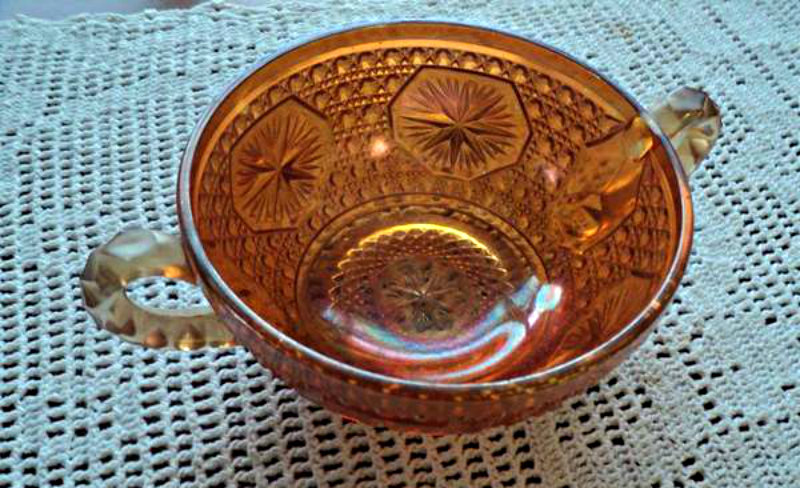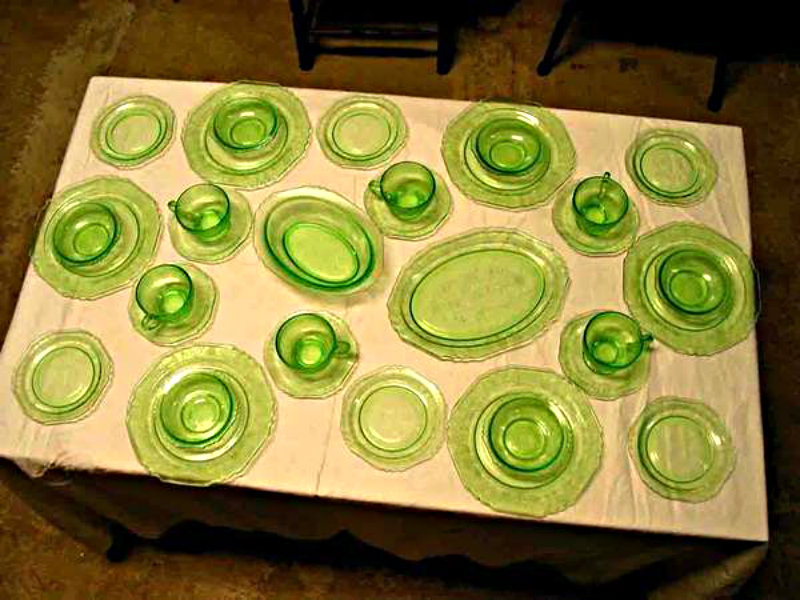What Color Depression Glass Is Worth the Most
While Depression Glass is noted for its unique array of colors and patterns, perhaps its most attractive feature is its extraordinary history. Depression Glass brings to mind 1930s-era America, when families struggled to put dinner on the table, let alone serve it on a fancy platter. At the time, these pieces cost no more than a loaf of bread– about a nickel. With just five cents, families could add a little cheer to their homes on the cheap. Today, just as in the past, Depression Glass has the ability to inspire and brighten up even the darkest of days.

A brief history:
At the turn of the 20th century, glassmaking was an art form and a luxury limited to upper class families. Pieces were made by hand and crystal was all the rage. All that changed starting in the mid-1920s, when companies began mass-producing glassware of a lesser quality. Suddenly, owning a beautiful serving dish or set of glasses was within reach for middle and lower class households. Companies such as Hocking Glass, Cambridge, Heisey, Federal Glass, Duncan & Miller, and MacBeth-Evans churned out affordable glassware in a variety of colors that appealed to the masses. Despite its flaws (heavy mold marks, air bubbles, etc.) these pieces were treasured for their lovely patterns and hues.

What to look for:
Collectors of Depression Glass pay particular attention to colors and patterns. The most highly sought-after colors include green, cobalt blue, and pink. Keep an eye out for patterns such as American Sweetheart, Cameo, Mayfair, and Royal Lace– these are especially prized by antiques collectors.
Unfortunately, many Depression Glass patterns have been reproduced, and all too often unsuspecting buyers discover their pieces are only copies after purchasing. Be a judicious collector by doing your research and buying from reputable dealers! Study photos and don't base your decision to purchase simply on the description listed beside the item.

Characteristics vs. Flaws:
Most Depression Glass is flawed by design, so the trick is differentiating typical (and acceptable) flaws that are a result of the item's factory production from those markings that bring down the piece's value.
Common characteristics of Depression Glass include slight variation in color, bubbles, sharp edges on plates and around handles (flash over), and straw or mold marks. These are all results of the way Depression Glass was produced rather than its wear over time. They should not diminish the value of an item. True flaws in Depression Glass such as chips, stress lines, cracks, flakes, and fleabites are undesirable and will decrease the worth of a piece. Make sure you know how to distinguish between these markings if you are an avid collector.
Price:
Cost varies significantly depending on the piece. A glass or plate may sell for under $15 while sets and larger items may run upwards of $200. Pink glass is most valuable, followed by blue and green. Rare colors such as tangerine and lavender are also worth more than common colors like yellow and amber. If you stumble upon an extremely rare piece like the red ruby Aladdin Beehive Lamp, expect to pay $800 or more!
What Color Depression Glass Is Worth the Most
Source: https://dustyoldthing.com/antique-spotlight-depression-glass/#:~:text=Pink%20glass%20is%20most%20valuable,to%20pay%20%24800%20or%20more!